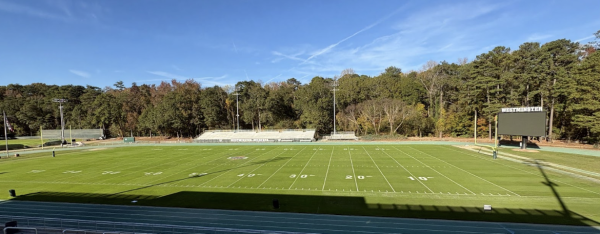24-hour relay raises awareness for cystic fibrosis
As exams concluded the first semester and winter break commenced, the 24-Hour Relay has again come and gone at Westminster. This decade-old tradition is a school running event where about 10 people form a team and take turns running one mile from 7 a.m. Dec. 19 to 7 a.m. Dec. 20. The 24-Hour Relay has become a student-run affair, and although it has evolved, the cause has remained essential. Former cross country coach Paul Koshewa started the event over 30 years ago to raise money and awareness for cystic fibrosis (CF), a life-threatening and genetic disease that causes persistent lung infections and progressively limits a person’s ability to breathe.
“We have tried to bring the focus back to cystic fibrosis and back to the running,” said senior co-organizer of the event Vivienne Reed. “The fact that it has gone so well in years past with student commitment to the cause and raising money is pretty outstanding.”
With upwards of $4,000 in donations from last year, participants are trying to make a lasting impact and contribution towards finding the cure for CF.
In recent years, the 24-Hour Relay has seen a significant increase in faculty and staff participation, with language and religious studies teacher Tim McCauley helping organize the event and also act as a lead sponsor for the faculty.
“This year we tried to spread things out,” said McCauley. “We got as many people involved from the community as possible, whether it be alumni, faculty, or students.”
What started as just another way for the boys cross country team to train and stand against CF has transformed due to the increased inclusivity and expanse of the relay.
“I love running, I’m really bad at it but I love it, and yet, that’s the best thing about the relay,” said Reed. “It’s really morphed into something that’s about having fun and is focused on bringing the community together to exercise and have a good time after exams.”
A common misconception about the 24-Hour Relay is that there is a requirement to stay awake throughout the whole event.
“I have to be awake the whole twenty four hours, but you don’t have to,” said senior co-organizer Charlotte Folinus. “You run with a team, so if you have 10 people you run about a mile an hour. Once it gets into the night, the pace decreases and some have the chance to get some sleep”.
Unlike the past two years where runners participated in relatively warm conditions, weather this year dipped into the twenties by night, which may have been a shock to inexperienced runners.
“Everyone felt the cold, was bundled up, and huddled around campfires and tents with friends,” said Folinus. “Many students continued to run and walk throughout the event, but the newer students did seem a little discouraged by the colder weather.”
Fortunately, staff members opened the gym to runners waiting for their turn.
“We just wanted to be in there to escape the cold,” said senior relay runner Carson Simon. “I didn’t like being policed inside the gym by the chaperones, but I really like the relay as a whole and the opportunity to hang out with your friends for 24 hours and support a good cause.”
While some runners recuperated in the gym, the newer runners brought a vitality to the relay because of their excitement to participate.
“There are peaks and valleys within the event,” said McCauley. “So, there are times of great excitement, but we also have lulls where the wind goes out of everybody.”
Of course, the 24-Hour Relay was an all-day job for others in the community.
“The support staffs of facilities, security, and even the health and wellness department are crucial to making it all work,” said McCauley, “and we know people realize that.”


